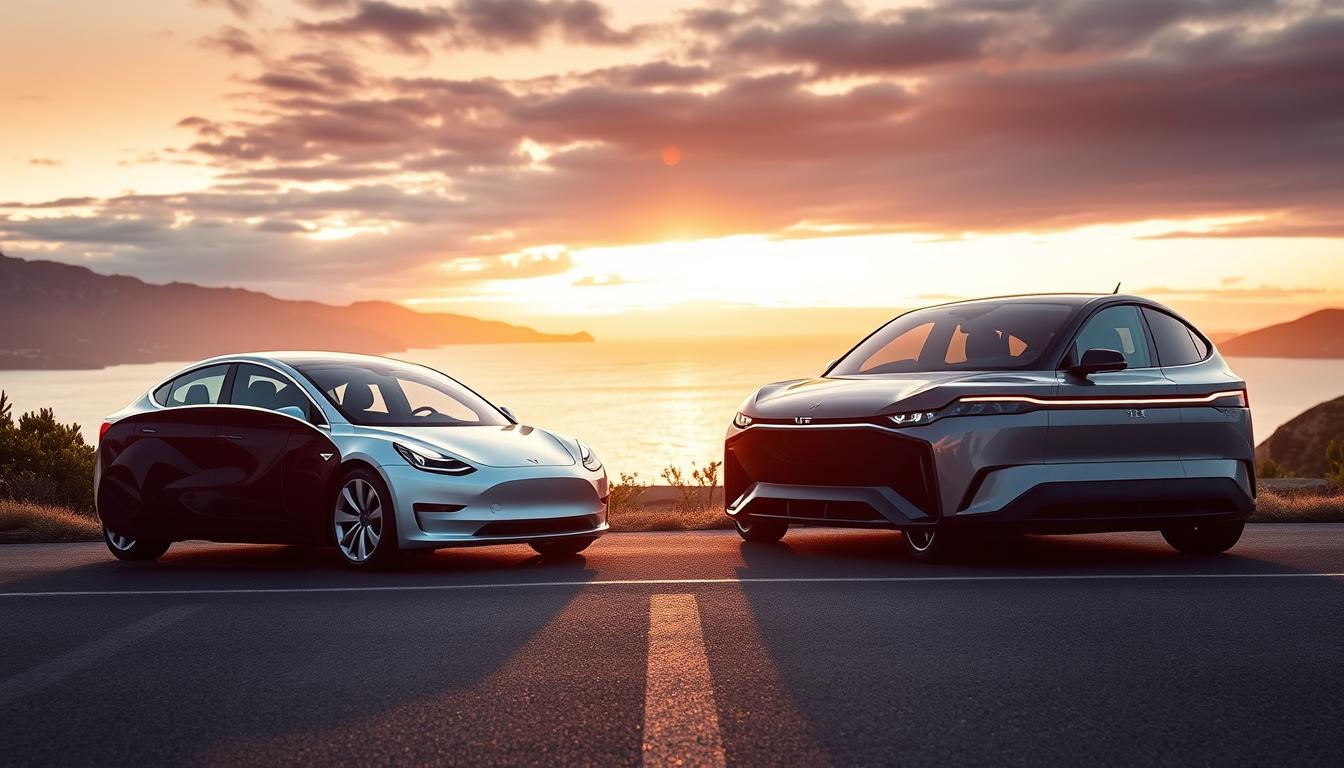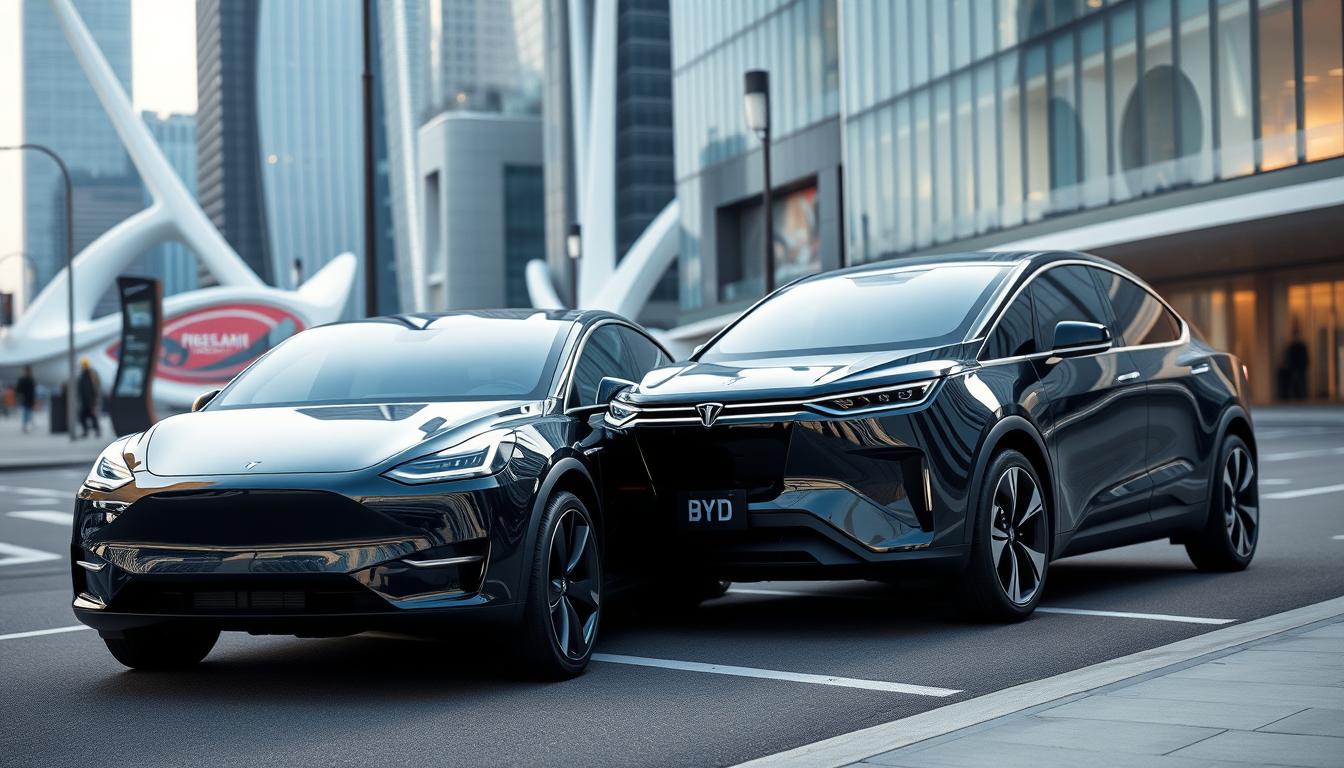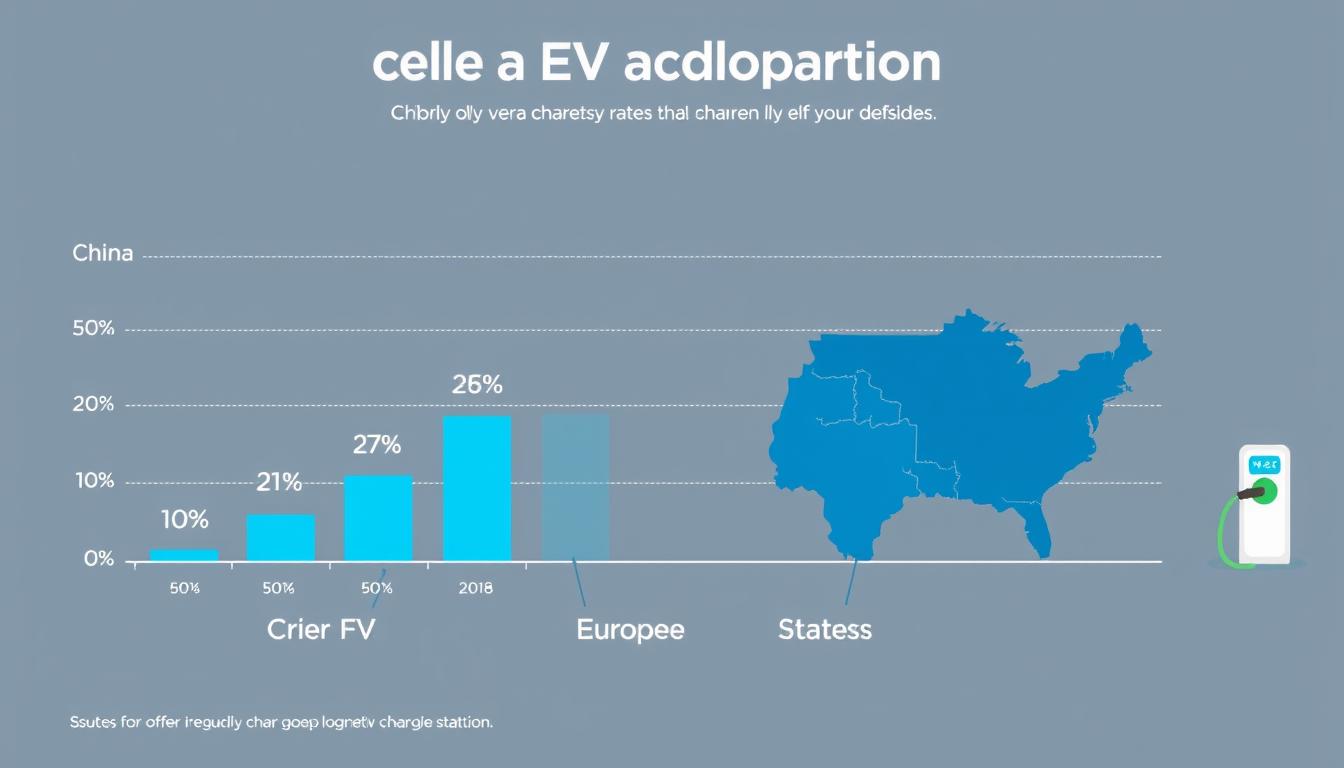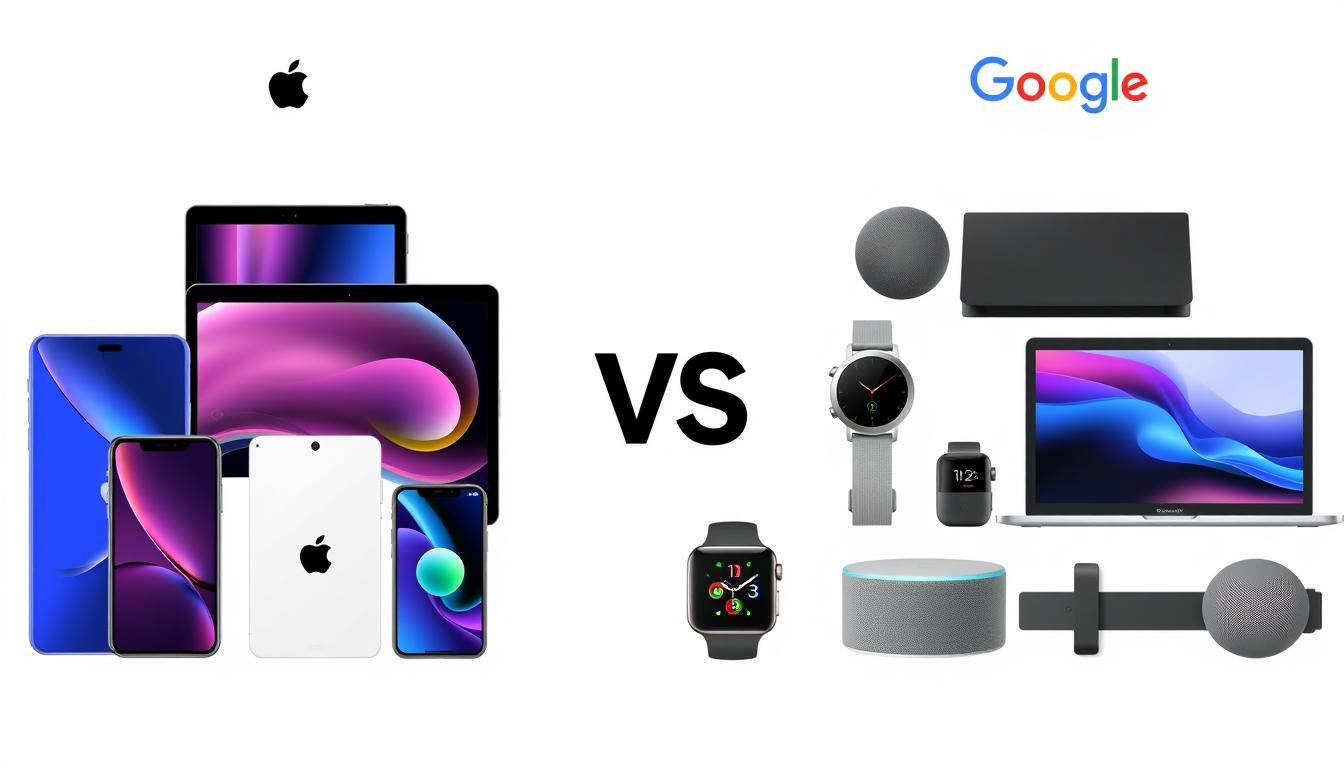The electric vehicle revolution is reshaping the automotive industry, with two giants emerging as the primary contenders for global dominance: Tesla and BYD. While Tesla pioneered the modern EV movement under Elon Musk’s visionary leadership, Chinese manufacturer BYD (Build Your Dreams) has rapidly evolved from a battery company to become the world’s largest EV producer by volume. This analysis examines how these companies compare across critical dimensions and which is better positioned to lead the future of electric vehicles.
Market Position and Global Reach
The battle for EV supremacy has reached a pivotal moment. In 2024, BYD reported staggering revenues of $107 billion, delivering 4.27 million vehicles worldwide—more than double Tesla’s 1.79 million units. Tesla generated $97.7 billion in revenue but experienced its first annual sales decline of 1.1%, signaling a potential shift in market dynamics.
Tesla’s Market Presence
Tesla maintains strong dominance in North America and Europe, where brand recognition and charging infrastructure give it significant advantages. The company’s focus on premium vehicles has established it as a luxury EV brand, though this positioning limits its market penetration in price-sensitive regions.
BYD’s Expanding Reach
BYD commands an impressive 32% of China’s new energy vehicle market compared to Tesla’s 6.1%. The Chinese manufacturer has aggressively expanded into emerging markets, establishing a presence in India, Brazil, and Southeast Asia ahead of Tesla. BYD’s strategy of offering affordable options has accelerated its global market penetration.
Technology and Innovation
Both companies have taken different approaches to technology development, with Tesla focusing on software and autonomous driving while BYD leverages its battery expertise and vertical integration.
| Technology Area | Tesla | BYD |
| Battery Technology | 4680 cylindrical cells, partnerships with Panasonic and CATL | Blade Battery (LFP chemistry), in-house production |
| Charging Infrastructure | Supercharger network (15 min for 200 miles) | 1,000-kW ultra-fast charging (5 min for 250 miles) |
| Autonomous Driving | Full Self-Driving (FSD) subscription ($99/month) | “God’s Eye” ADAS (included free with vehicles) |
| Manufacturing Innovation | Giga Casting, advanced robotics | Vertical integration (from mining to final assembly) |
Battery Technology Comparison
Recent research published in Cell Reports Physical Science revealed significant differences between Tesla’s 4680 battery and BYD’s Blade Battery. BYD’s LFP (lithium iron phosphate) technology offers longer lifespan, enhanced safety, and costs approximately 10 euros less per kWh—translating to savings of 600 euros per 60 kWh battery pack compared to Tesla’s design. This cost advantage is particularly significant for consumers and manufacturers looking to reduce overall expenses in electric vehicle production.
Furthermore, the longer lifespan of BYD’s Blade Battery can lead to lower replacement costs over time, making it a more attractive option for fleet operators and individual users alike. Additionally, the enhanced safety features of the Blade Battery reduce the risk of thermal runaway, which has been a concern in lithium-ion batteries, thereby increasing consumer confidence in electric vehicles. These factors collectively position BYD as a formidable competitor in the rapidly evolving electric vehicle market, where efficiency and safety are paramount.
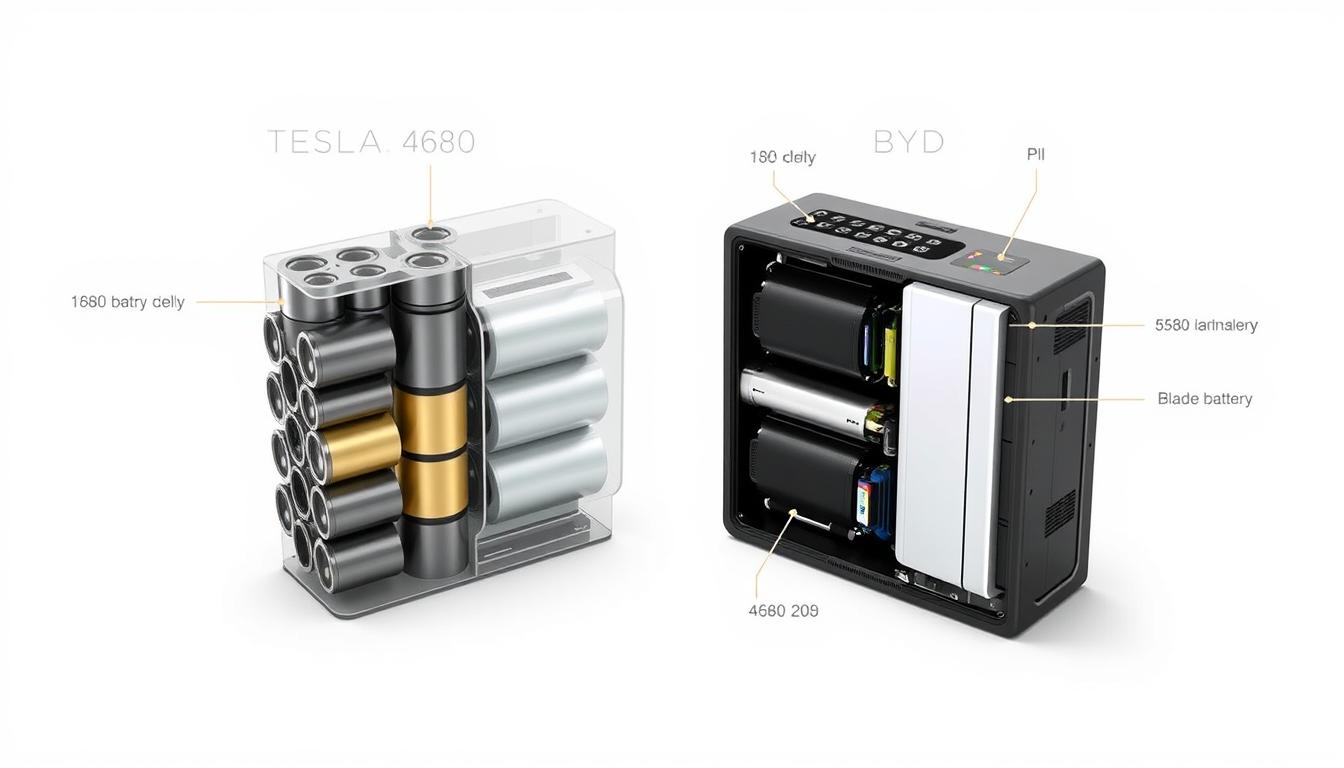
Tesla’s Technology Advantages
- Superior energy density in battery cells
- More advanced autonomous driving capabilities
- Established Supercharger network in Western markets
- Over-the-air software updates pioneered the industry
BYD’s Technology Advantages
- More cost-effective battery production
- Safer LFP chemistry with longer lifespan
- Ultra-fast charging technology (1,000-kW system)
- Complete vertical integration from raw materials to vehicles
Product Lineup and Pricing Strategy
The product strategies of Tesla and BYD reflect their different approaches to the EV market. Tesla focuses on fewer models with premium positioning, emphasizing high-performance electric vehicles that cater to a more affluent customer base. This strategy allows Tesla to maintain strong brand loyalty and higher profit margins. In contrast, BYD offers a diverse range of vehicles at various price points, aiming to capture a broader segment of the market, including budget-conscious consumers. By providing options that span from affordable electric cars to more advanced models, BYD effectively addresses the varying needs of consumers and promotes wider adoption of electric vehicles across different demographics.
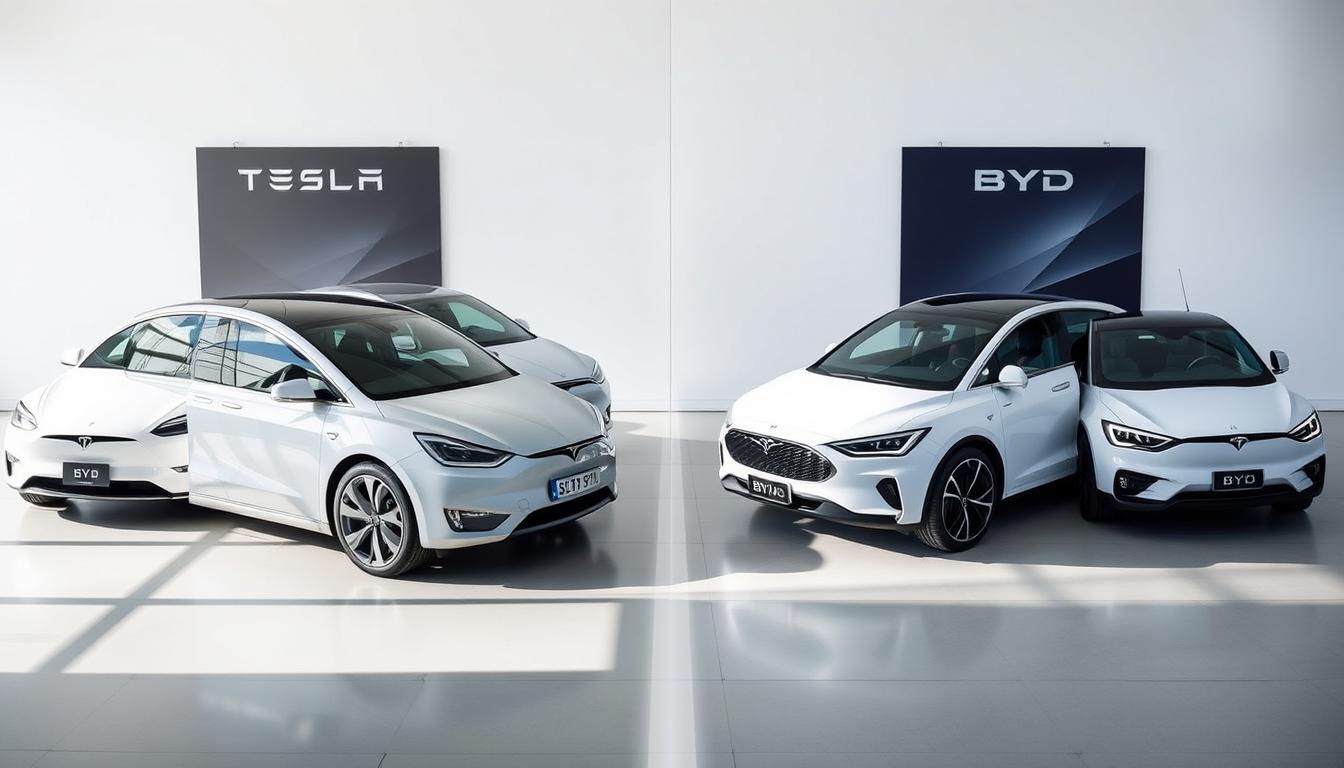
Tesla’s Focused Lineup
- Model 3: Entry-level sedan starting at $39,990
- Model Y: Compact SUV starting at $44,990
- Model S: Premium sedan with higher performance
- Model X: Premium SUV with distinctive falcon-wing doors
- Cybertruck: Recently launched with production challenges
BYD’s Diverse Portfolio
- Dolphin: Compact hatchback starting at $26,195
- ATTO 3: Compact SUV starting at $37,695
- SEAL: Mid-size sedan with 354-mile range
- SEAL U DM-i: SUV with 540-mile combined range at $33,205
- SEALION 7: Premium SUV starting at $46,990
Pricing Strategy Impact
BYD’s more affordable pricing has been instrumental in its rapid market share growth. The entry-level Dolphin costs approximately $13,800 less than Tesla’s Model 3, making electric mobility accessible to a broader consumer base. This price advantage has been particularly effective in emerging markets where price sensitivity is higher, allowing BYD to attract a diverse range of customers who may have previously considered electric vehicles out of reach.
Furthermore, the competitive pricing strategy not only appeals to budget-conscious consumers but also positions BYD as a formidable contender against established players like Tesla. By offering a variety of models at different price points, BYD is able to cater to various segments of the market, thereby enhancing its overall appeal and increasing its market penetration. As a result, this pricing strategy not only boosts sales but also helps in building brand loyalty among new electric vehicle buyers.
Manufacturing and Supply Chain
The manufacturing approaches of Tesla and BYD highlight fundamental differences in their business models and strategic priorities.
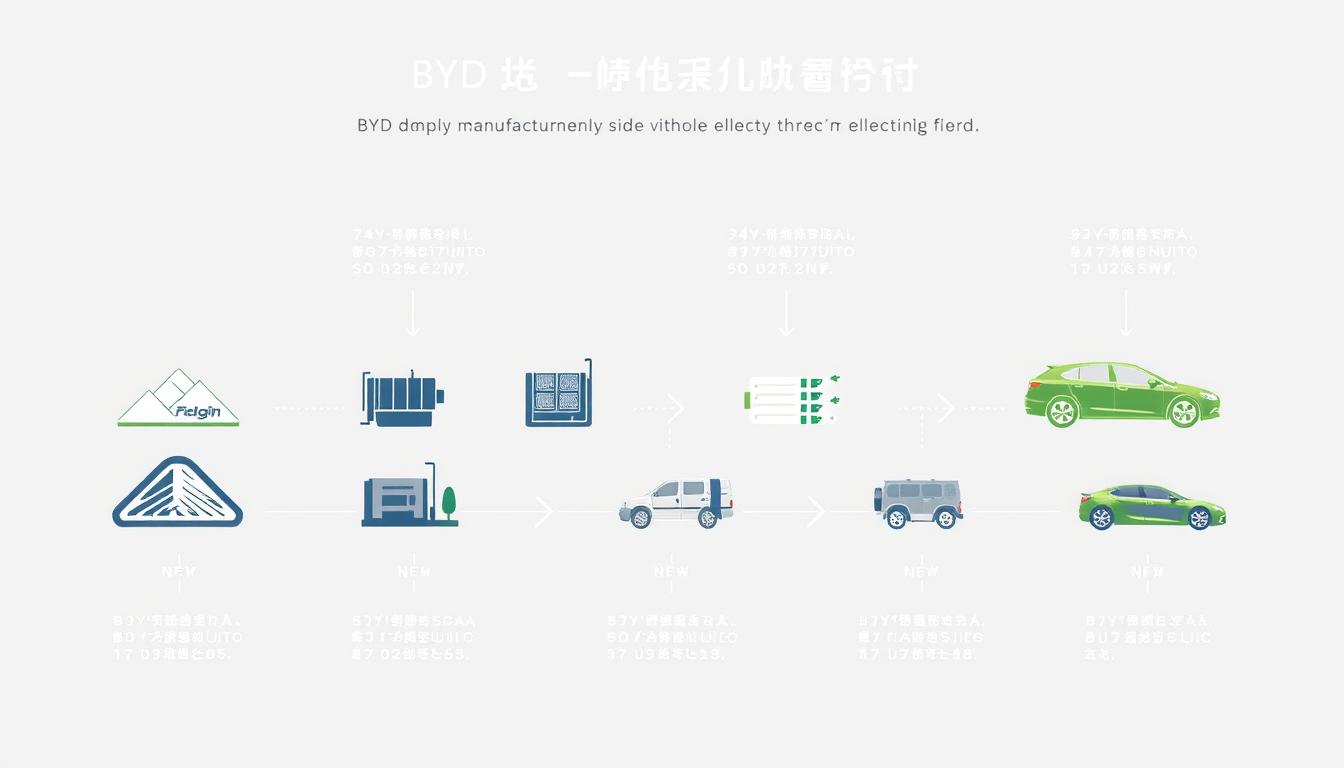
Tesla’s Manufacturing Approach
Tesla operates massive Gigafactories in the United States, China, and Germany, focusing on high automation and innovative manufacturing techniques like Giga Casting. However, the company relies heavily on external suppliers for critical components, including some battery cells from Panasonic and CATL. This dependency has occasionally created production bottlenecks during supply chain disruptions.
BYD’s Vertical Integration
BYD’s approach to manufacturing represents complete vertical integration. The company controls every aspect of production from raw material sourcing (including its own lithium mines) to battery cell manufacturing and final vehicle assembly. This integration gives BYD greater control over costs and supply stability, allowing it to scale production more rapidly during periods of high demand.
“BYD’s vertical integration is their secret weapon. They don’t just make cars—they make everything that goes into the cars, giving them unprecedented control over quality, cost, and supply chain resilience.”
Regional Market Strategies
The global electric vehicle market is not homogeneous, and both companies have adopted different regional strategies to maximize their competitive advantages.
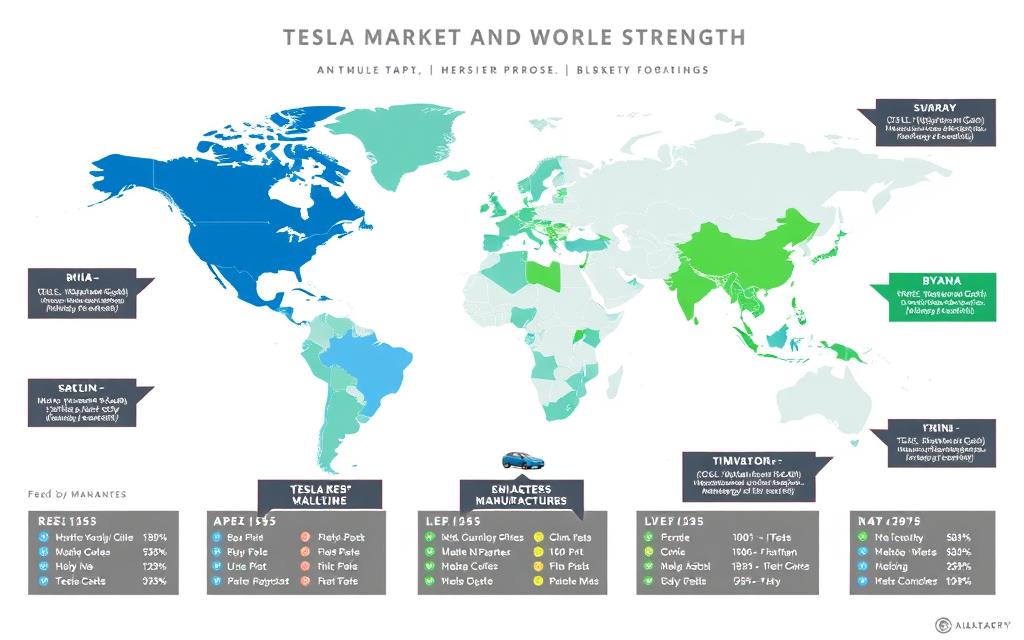
North America
Tesla maintains dominant market share in North America, benefiting from strong brand recognition, manufacturing presence, and an extensive Supercharger network. BYD has yet to enter the U.S. market significantly due to high import tariffs and geopolitical tensions, though it has begun expanding into Mexico and Canada.
China
BYD commands 32% of China’s new energy vehicle market compared to Tesla’s 6.1%. Tesla’s sales in China dropped by 50% in 2024, largely due to regulatory challenges in implementing Full Self-Driving technology and intensifying competition from domestic manufacturers offering more affordable options.
Europe
Tesla’s European sales fell by 40% in February 2025 compared to the previous year as competition intensified. BYD has been aggressively expanding its European presence, though it faces potential tariffs as the EU investigates Chinese EV subsidies.
India and Emerging Markets
BYD has established an early lead in India, the world’s third-largest auto market, with models like the ATTO 3 already available since 2022. Meanwhile, Tesla continues negotiations with the Indian government over import duties and local production requirements, giving BYD a significant head start in this crucial growth market.
Challenges and Future Outlook
Both companies face significant challenges as they compete for leadership in the evolving electric vehicle market.
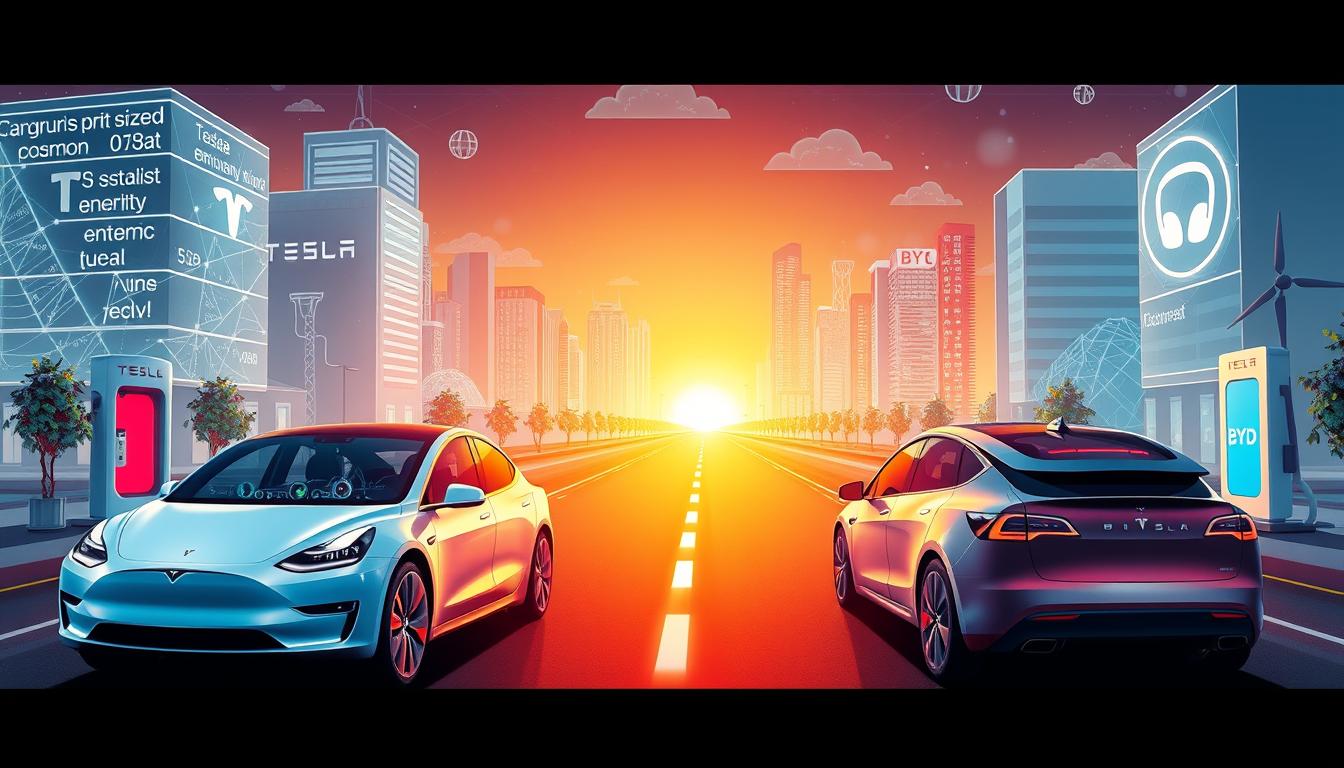
Tesla’s Challenges
- Increasing competition in all markets, particularly from Chinese manufacturers
- First annual sales decline in 2024 signals potential market saturation for premium EVs
- Regulatory hurdles for Full Self-Driving technology in key markets
- Need to develop more affordable models to expand market reach
BYD’s Challenges
- Limited brand recognition outside of China
- Potential trade barriers and tariffs in Western markets
- Perception challenges regarding Chinese-made vehicles in some markets
- Lower profit margins due to competitive pricing strategy
Future Outlook
The competition between Tesla and BYD will likely intensify as both companies address their respective challenges. Tesla’s planned $25,000 model could help it compete in more price-sensitive segments, while BYD’s continued technological innovation and international expansion will increase pressure on Tesla’s market position.
The ultimate winner may not be determined by vehicle sales alone but by success in adjacent markets like energy storage, autonomous driving technology, and charging infrastructure. Both companies are positioning themselves as comprehensive clean energy providers rather than just vehicle manufacturers.
Who Will Lead the Future of Electric Vehicles?
Cast your vote and see what others think about the future leadership of the global EV market.
Conclusion: The Future of Electric Vehicles
The competition between Tesla and BYD represents more than just a battle between two companies—it symbolizes the broader shift in the global automotive industry toward electrification and the changing balance of power between traditional Western manufacturers and emerging Chinese competitors.
Tesla’s pioneering role in making electric vehicles desirable and its strong brand cachet give it significant advantages, particularly in premium segments. However, BYD’s vertical integration, cost advantages, and diverse product lineup position it well to capture mass-market adoption, especially in emerging economies.
As the electric vehicle market continues to evolve, both companies will need to adapt their strategies. Tesla must address affordability to maintain growth, while BYD needs to overcome brand recognition challenges in Western markets. The future of electric vehicles will likely be shaped by how effectively each company navigates these challenges while continuing to innovate in battery technology, manufacturing efficiency, and user experience.
